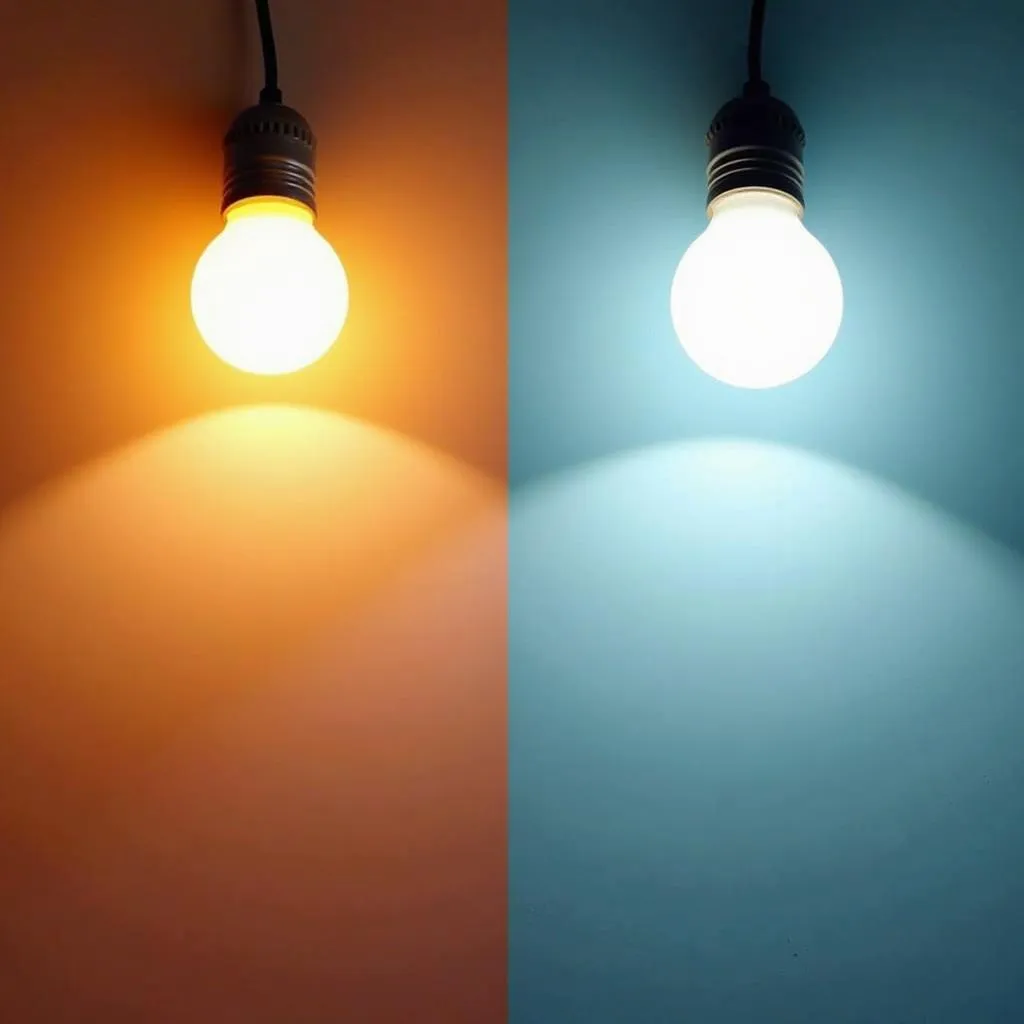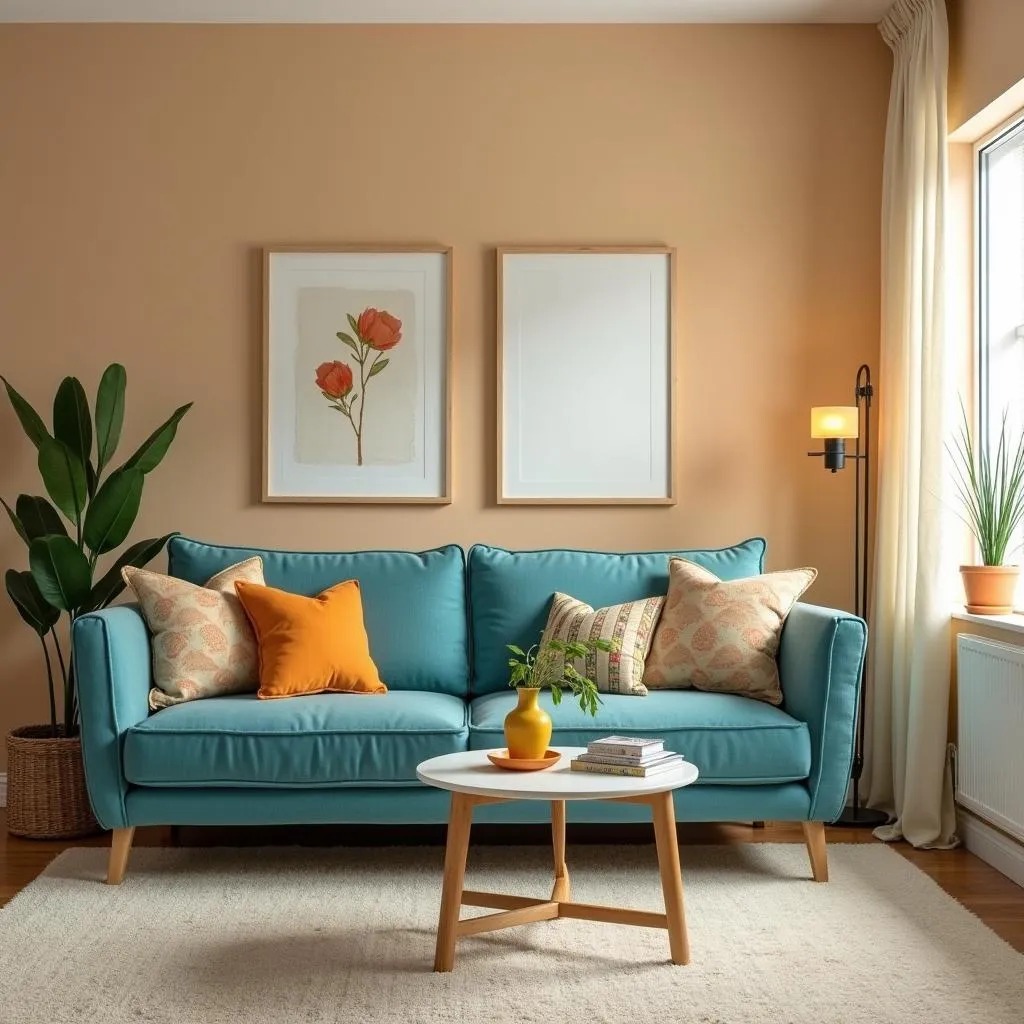Understanding the temperature of a color is a fundamental aspect of design, influencing the overall mood and feel of a space. Whether you’re deciding on paint for your living room or choosing the perfect accent pillow, knowing how to tell if a color is warm or cool can make all the difference in creating a harmonious and visually appealing environment.
The Color Wheel: Your Guide to Color Temperature
The color wheel is a valuable tool for visualizing the relationships between colors and their temperatures. Imagine a line dividing the color wheel in half, with one side encompassing reds, oranges, and yellows, and the other side encompassing greens, blues, and violets.
-
Warm Colors: The colors on the red, orange, and yellow side of the spectrum are considered warm colors. They evoke feelings of warmth, energy, and excitement, reminiscent of sunlight, fire, and autumn leaves.
-
Cool Colors: On the other side of the spectrum, greens, blues, and violets are classified as cool colors. These hues are associated with calmness, tranquility, and peace, often bringing to mind images of water, sky, and nature.
Beyond the Basics: Subtleties within Color Temperature
While the color wheel provides a general framework, it’s important to remember that color temperature is not always absolute. A color’s temperature can be influenced by the presence of undertones and its surrounding colors.
-
Undertones: A color’s undertone is the subtle hue that peeks through, adding complexity and depth. For instance, a red with a blue undertone will appear cooler than a red with a yellow undertone.
-
Color Juxtaposition: The colors surrounding a particular hue can also impact its perceived temperature. A blue placed next to a vibrant green will appear cooler than the same blue placed next to a deep purple.
 Color Wheel with Warm and Cool Sides
Color Wheel with Warm and Cool Sides
Practical Tips to Determine Color Temperature
Here are some practical ways to determine if a color is warm or cool:
-
Look for Yellow or Blue Undertones: Hold the color swatch next to a pure white surface. If you notice hints of yellow, the color leans warm. If you detect hints of blue, the color leans cool.
-
Consider the Color’s Associations: Think about what the color reminds you of. Does it evoke a sense of warmth and energy like a sunset, or does it conjure a feeling of calmness and serenity like a misty morning?
-
Experiment with Lighting: Lighting plays a significant role in how we perceive color. Observe the color under both warm and cool lighting conditions to see how its temperature appears to shift.
 Comparing Paint Swatches Under Different Lighting
Comparing Paint Swatches Under Different Lighting
Why Color Temperature Matters
Understanding color temperature is crucial in design for several reasons:
-
Creating Mood and Atmosphere: Warm colors can make a space feel cozy and inviting, while cool colors can evoke a sense of spaciousness and tranquility.
-
Highlighting Architectural Features: Warm colors can be used to draw attention to focal points, while cool colors can recede and make spaces appear larger.
-
Balancing Visual Weight: Warm colors tend to advance visually, while cool colors tend to recede. This interplay can be used to create balance and harmony within a space.
Expert Insights
“Color temperature is not about right or wrong choices, but rather about understanding the psychological impact of color and using it intentionally to create the desired atmosphere,” says renowned interior designer, Anya Sharma. “A well-balanced space often incorporates both warm and cool tones to create a sense of visual interest and dynamism.”
 Living Room with Balanced Warm and Cool Tones
Living Room with Balanced Warm and Cool Tones
Conclusion
Mastering the art of distinguishing warm and cool colors empowers you to make informed decisions when designing your spaces. By understanding the nuances of color temperature and utilizing it strategically, you can transform your surroundings into havens that reflect your personal style and evoke the desired emotions. Need help choosing the perfect color palette for your next project? Contact Color Box Hanoi at 0373298888 or [email protected]. Visit our showroom at 86 Cầu Giấy, Hà Nội, where our team of color experts is available 24/7 to assist you.

